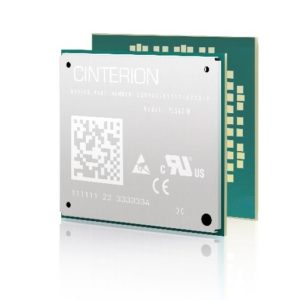 A lot has changed in machine-to-machine communication in 20 years. Back in 1996, Siemens Wireless Modules introduced a 2G modem designed only for machines. Very quickly, 2G developed into GPRS; Dual, Tri and Quad band products evolved and soon the entire planet had the perfect standardised network for low data rate machine-talk using only four frequency bands.
A lot has changed in machine-to-machine communication in 20 years. Back in 1996, Siemens Wireless Modules introduced a 2G modem designed only for machines. Very quickly, 2G developed into GPRS; Dual, Tri and Quad band products evolved and soon the entire planet had the perfect standardised network for low data rate machine-talk using only four frequency bands.
A decade later 3G appeared, which was probably over specified for most machines, and the threat of some network operators to shut off good old 2G was enough to start a wave of migration from 2G to 3G. Nevertheless, four frequency bands were enough to cover the world.
Another decade on, and 4G or LTE offered super-fast connectivity to devices along with dedicated low power, low speed LTE standards to cover the needs of our machines (which are now called ‘things’) in the form of LTE Cat. 1, LTE-M and LTE-NB1 or Narrow Band IoT (NB-IoT). But what about global connectivity?
IoT device makers don’t want to make a version for Europe, another for the US, another for Asia, and one for Australia – it’s just a faff. Moreover, some ‘things’ (like containers) really do need to roam the world and with LTE requiring so many bands, you simply just can’t do that anymore – or can you?
LTE-M is working towards deployment across North America with two operators, whilst in Europe there seems to be indecisiveness as to which will fly first, LTE-M or NB-IoT, with the added complexity of multiple operators. Apart from pockets of urban trials, neither seems to be on its way yet to blanket coverage. In China at least, the clear leader is NB-IoT. Furthermore a myriad of band frequency combinations builds a very complicated puzzle for a multi-region deployment on these standards.
It’s a tough choice for IoT device makers today. LTE Cat. 1 is the safest bet for a global coverage standard, but across lots of bands – which traditionally require regional variations of IoT modules. Furthermore, 2G is still OK for most of the world, and the same can be said for 3G today.
But for how long, and where is safe?
The solution is here from the same people who introduced that 2G modem back in 1996, and who now form part of our M2M and IoT team. Our latest PLS62-W Cinterion wireless module delivers highly efficient Multi Band LTE Cat. 1 connectivity, with seamless fallback to 3G and 2G for global IoT solutions. It is the only global IoT module giving us that coverage we got used to over 15 years ago, but with the modern buzz of LTE Cat. 1, industrial expertise and that term IoT – the equivalent of m2m in 1996.
For those tasked with developing IoT applications or devices, this development could significantly streamline efforts to deliver them globally. It’s just like the good old days!


